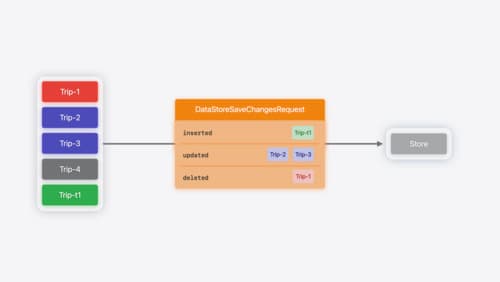what's the difference between Core Data and Swift Data?
Asked on 2024-09-07
1 search
The difference between Core Data and Swift Data primarily lies in their design and capabilities for data management in Swift applications.
Core Data:
- Core Data is a long-standing framework used for managing object graphs and persisting data in iOS and macOS applications.
- It provides features like data modeling, change tracking, and undo management.
- Core Data is integrated with Objective-C and has been a staple for data persistence in Apple platforms.
Swift Data:
- Swift Data is a newer framework introduced to provide a more Swift-native approach to data modeling and persistence.
- It leverages modern Swift language features, such as macros, to simplify the process of defining and managing data models.
- Swift Data allows for more flexible data storage options, including custom data stores, which can use backends like SQLite, remote web services, or JSON files.
- It provides enhanced capabilities for tracking changes in data stores, making it easier to sync local changes with remote services.
- Swift Data is designed to work seamlessly with SwiftUI, allowing for more efficient data querying and view updates.
For more details on Swift Data, you can refer to the session What’s new in SwiftData (00:01:01).

Create a custom data store with SwiftData
Combine the power of SwiftData’s expressive, declarative modeling API with your own persistence backend. Learn how to build a custom data store and explore how to progressively add persistence features in your app. To get the most out of this session, watch “Meet SwiftData” and “Model your schema with SwiftData” from WWDC23.

What’s new in SwiftData
SwiftData makes it easy to add persistence to your app with its expressive, declarative API. Learn about refinements to SwiftData, including compound uniqueness constraints, faster queries with #Index, queries in Xcode previews, and rich predicate expressions. Join us to explore how you can use all of these features to express richer models and improve performance in your app. To discover how to build a custom data store or use the history API in SwiftData, watch “Create a custom data store with SwiftData” and “Track model changes with SwiftData history”.

What’s new in Swift
Join us for an update on Swift. We’ll briefly go through a history of Swift over the past decade, and show you how the community has grown through workgroups, expanded the package ecosystem, and increased platform support. We’ll introduce you to a new language mode that achieves data-race safety by default, and a language subset that lets you run Swift on highly constrained systems. We’ll also explore some language updates including noncopyable types, typed throws, and improved C++ interoperability.
